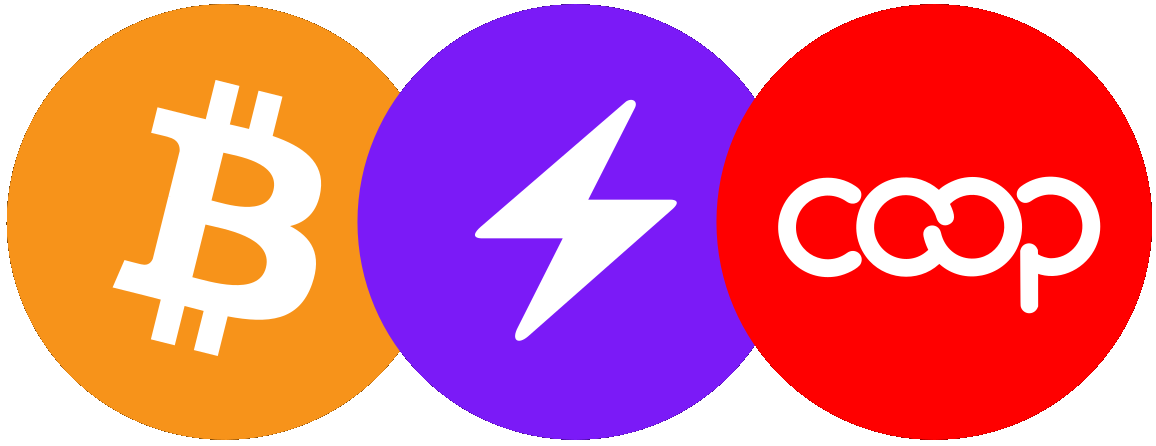1
A fisherman lives with his wife Maria and young daughter by the sea. Since the baby was in the womb, Juan has been saving for Nene’s college education by keeping his earnings in fish cans🥫.
Isang mangingisda ang nakatira kasama ang kanyang asawang si Maria at batang anak malapit sa dagat. Mula pa noong nasa sinapupunan pa lamang ang bata, si Juan ay nag-iipon para sa edukasyon ni Nene sa pamamagitan ng paglalagay ng kanyang kita sa mga lata ng isda.
2
Is he doing it right? At inflation of 6%, his ₱1,000 is worth less than ₱328 in 18 years.
Tama ba ang ginagawa niya? Sa inflation na 6%, ang kanyang ₱1,000 ay magkakahalaga ng ₱328 sa loob ng 18 taon.
3
Inflation is the increase in prices over time or the decrease in the purchasing power of a currency (ex. $, ₱). If there is devaluation, Juan’s ₱1,000 is worth even less. Devaluation is a decrease in the value of a country’s currency relative to other currencies. Today, 1$ is ₱55.5. In the 1960s, it was ₱3.90. In the 1990s it was ₱26. During the Asian financial crisis (1997 onwards) it went beyond ₱40 while you were sleeping.
Ang inflation ay pagtaas ng mga presyo sa paglipas ng panahon o pagbaba ng purchasing power ng isang currency (halimbawa, $, ₱).Kung mayroong devaluation, ang ₱1,000 ni Juan ay nagkakahalaga pa ng mas mababa. Ang devaluation ay pagbaba ng halaga ng currency ng isang bansa kumpara sa ibang currencies. Ngayon, $1 ay ₱55.5. Noong 1960s, ito ay ₱3.90. Noong 1990s, ito ay ₱26. Sa panahon ng Asian financial crisis (mula 1997), ito ay umabot sa higit sa ₱40 habang natutulog ka.

4
But Juan should “invest” his peso in, well, real estate then! And other “investments” that also “rise in value” over time, like the stock market! Sure—but really.
Ngunit dapat “mag-invest” si Juan ng kanyang piso sa, tama, real estate! At iba pang “investments” na nagtaas din ng halaga sa paglipas ng panahon, tulad ng stock market!
5
From a practical, philosophical and first principles point of view, would you agree that the money he made from fishing 🎣 is a fair recompense for his labor?
Mula sa isang praktikal, pilosopikal at unang mga prinsipyo, sang-ayon ka ba na ang pera na kanyang kinita mula sa pangingisda 🎣 ay isang patas na kabayaran para sa kanyang pawis?
6
From the same point of view, is it fair for him to have to or be expected to “invest” otherwise his savings in fish cans🥫become worthless?
Mula sa parehong punto de bista, makatarungan ba para sa kanya na kailangan niyang o inaasahan na “mag-invest” sa iba pa ang kanyang ipon sa mga lata ng isda 🥫 upang hindi ito mawalan ng halaga?
7
Everything they told you when you were a kid about “savings” was a lie.
Lahat ng sinabi nila sa iyo noong bata ka tungkol sa “savings” ay kasinungalingan.
8
Inflation happens because governments print money without limit. If it rains fish in Juan’s village, his catch will sell for ₱0 a kilo. The value of money keeps going down because governments won’t stop printing money.
Ang inflation ay nangyayari dahil sa walang limitasyong pagpapakalat ng pera ng mga pamahalaan. Kung umuulan ng isda sa nayon ni Juan, ang kanyang huli ay mabebenta ng ₱0 kada kilo. Ang halaga ng pera ay patuloy na bumababa dahil hindi tumitigil ang mga pamahalaan sa pag-imprenta ng pera.
9
Just like the last of the Japanese World War II stragglers found deep in the woods of Lubang (Mindoro) in the 1970s, most academics deep into books don't know that the gold standard ended in the 1970s. 50+ years, half a vampire century, a news older than most of them.
Tulad ng huling mga Hapones na nahanap sa kagubatan ng Lubang (Mindoro) noong 1970s, karamihan sa mga akademiko na malalim sa pag-aaral ay hindi alam na ang gold standard ay natapos noong 1970s. Mahigit 50 taon na ang nakalipas, kalahating siglo ng mga bampira, isang balita na mas matanda kaysa sa karamihan sa kanila.
10
In that gold standard, money was based on a fixed quantity of gold. The US unilaterally terminated the convertibility of the $ to gold in 1971.
Sa gold standard, ang pera ay nakabatay sa isang nakapirming dami ng ginto. Noong 1971, nagpasya ang Estados Unidos na itigil ang pagpapalit ng dolyar sa ginto nang walang pahintulot ng ibang bansa.
11
Why did the US do so? Because it could. Everybody wants the $, everybody wants to go to the US, and everyone loves the $.
Bakit ginawa ng US ito? Dahil kaya nila. Lahat ay gusto ng $, lahat ay gustong pumunta sa US, at lahat ay love ang $.
12
This is why the $ (and the ₱, etc.) are called “fiat” money. It’s not the car brand Fiat.
Kaya't tinatawag na “fiat” ang $ (at ang ₱, at iba pa) dahil dito. Hindi ito ang tatak ng sasakyan na Fiat.
13
It means something like “Let there be light” in the Book of Genesis. If only the money printers were actually God.
Ibig sabihin nito ay parang "Hayaan mong magkaruon ng liwanag" sa Aklat ng Genesis. Sana nga kung ang mga nag-i-imprenta ng pera ay tunay na Diyos.
14
Then 2008 happened. It was the financial crisis of the world. It was caused by the biggest banks in the US. The US government printed a lot of money to “save” them. Save the crooks that cooked the books—the irony.
Nangyari nga ang taon 2008. Ito ang krisis sa pinansiyal sa buong mundo. Ito'y sanhi ng mga pinakamalalaking bangko sa US. Nag-print ang pamahalaan ng US ng maraming pera upang "iligtas" ang mga ito. Iligtas ang mga manggagantso na nagluto ng mga libro—ang ironiya.
15
So in 2009, bitcoin happened as a reaction to such revolting irony. Bitcoin has a supply limit of 21 million bitcoins. Each bitcoin is subdivided into 100 million smaller pieces called “satoshis.”
Kaya noong 2009, nangyari ang bitcoin bilang reaksyon sa nakakadiring ironiya na iyon. Ang bitcoin ay may limitadong supply na 21 milyong bitcoins. Ang bawat bitcoin ay nahahati sa 100 milyong mas maliit na bahagi na tinatawag na “satoshis.”
16
Bitcoin is available to everyone, but under the control of no one. So it cannot be corrupted by neither government nor banks nor anyone else.
Ang bitcoin ay available sa lahat, ngunit hindi nasa ilalim ng kontrol ng sinuman. Kaya't ito ay hindi maaaring ma-corrupt ng gobyerno, ng mga bangko, o ng sinuman pa.
17
Anyone who has an internet connection and a phone can have access to bitcoin.
Ang sinumang may internet connection at telepono ay maaaring magkaruon ng access sa bitcoin.
18
#StudyBitcoin. You are not late. In fact, you are very early. Bitcoin is just turning 15 years old. [Editor’s note: Comparably, the World Wide Web is just 34 years old, with the first web page created by Tim Berners-Lee in 1989.]
#AralinAngBitcoin. Hindi ka huli. Sa katunayan, napakagaan mo pang dumating. Ang bitcoin ay nagdiriwang lamang ng ika-15 taon. [Editor's note: Ikukumpara rito, ang World Wide Web ay may edad na 34 taon lamang, na may unang web page na ginawa ni Tim Berners-Lee noong 1989.]
19
Get a Lightning wallet. Lightning is the fastest way to send and receive bitcoin from anyone, anywhere in the world.
Kumuha ng Lightning wallet. Ang Lightning ay ang pinakamabilis na paraan para magpadala at tumanggap ng bitcoin mula sa sinuman, kahit saan sa mundo.

20
You don’t need much bitcoin to start. With 1 satoshi, welcome to the revolution! The right time to save in bitcoin is now, and every time. Every time you have extra money to save. Don’t spend it on non-necessities. Save it in bitcoin.“Hodl,” spend and replace.
Hindi mo kailangang maraming bitcoin para magsimula. Sa 1 satoshi, maligayang pagdating sa rebolusyon! Ang tamang panahon para mag-ipon sa bitcoin ay ngayon, at sa bawat oras. Sa bawat pagkakaroon mo ng extra na pera na mailagay sa tabi. Huwag itong gastusin sa mga hindi kailangan. I-save ito sa bitcoin. "Hodl," gumastos at palitan.
21
Don’t shitcoin. Then, of course, #TeachBitcoin!
Huwag mag-“shitcoin.” At syempre, #IturoAngBitcoin!







